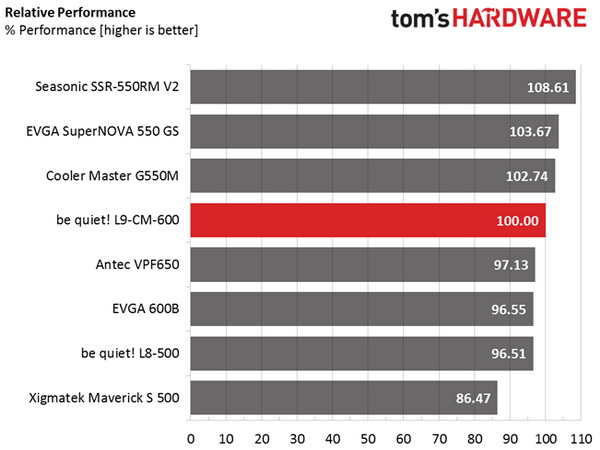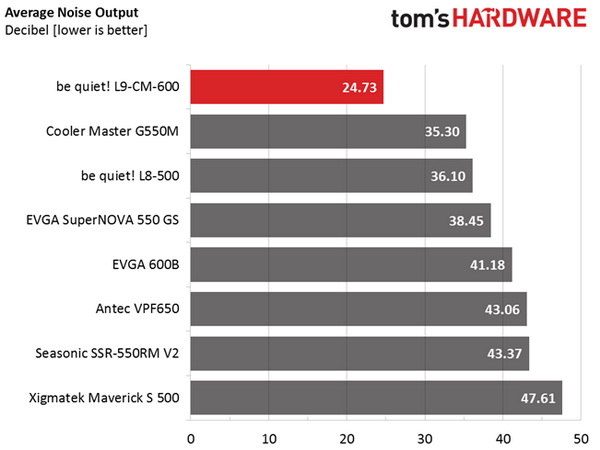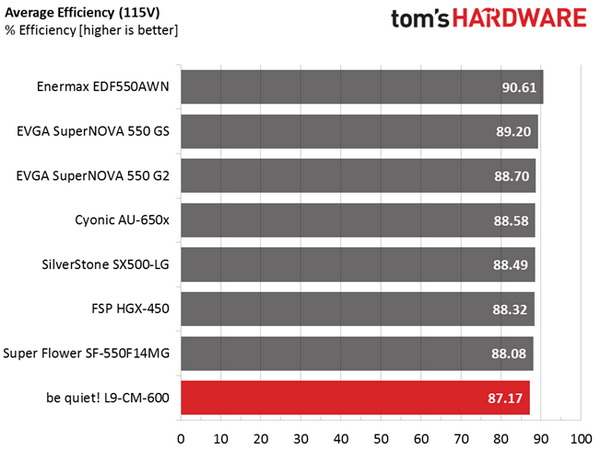be quiet! Pure Power 9 600W PSU Review
be quiet! released the updated Pure Power 9 series that consists of four semi-modular models with capacities ranging from 400W to 700W. Today, we're looking at the 600W implementation to see where it stands in the competitive mainstream market.
Why you can trust Tom's Hardware
Performance, Performance Per Dollar, Noise And Efficiency Ratings
Performance Rating
The following graph shows the total performance rating of the PSU, comparing it to other units we have tested. To be more specific, the L9-CM-600W is shown as 100 percent, and every other unit's performance is shown relative to it.
Performance is way better than the previous generation, and we can easily say it's good for the standards of this category.
Performance Per Dollar
The following chart may be the most interesting to many of you because it depicts the unit's performance-per-dollar score. We looked up the current price of each PSU on popular online shops and used those prices and all relative performance numbers to calculate the index. If the specific unit wasn't available in the United States, we searched for it in popular European Union shops, converting the listed price to USD (without VAT). Note that all of the numbers in the following graph are normalized by the rated power of each PSU.
With an MSRP of $74.90 the L9-CM-600W achieves a high performance per dollar ratio. Compared to the EVGA and Xigmatek offerings that lead in this chart, be quiet!'s PSU offers notably better performance.
Noise Rating
The graph below depicts the cooling fan's average noise over the PSU's operating range, with an ambient temperature between 28 °C and 30 °C (82 °F to 86 °F).
The L9-CM-600 beats every other offering in this category easily, and it does so without utilizing a semi-passive mode.
Efficiency Rating
The following graph shows the average efficiency of the PSU throughout its entire operating range, with an ambient temperature between 28 °C and 30 °C.
Get Tom's Hardware's best news and in-depth reviews, straight to your inbox.
Compared to Gold- and Platinum-rated units, the L9-CM-600 naturally doesn't stand a chance. However, given its Silver rating, it registers high efficiency overall. Unfortunately, we don't have any other Silver-rated units in our 115V database to compare.
Current page: Performance, Performance Per Dollar, Noise And Efficiency Ratings
Prev Page Ripple Measurements Next Page Pros, Cons And Final Verdict
Aris Mpitziopoulos is a contributing editor at Tom's Hardware, covering PSUs.



